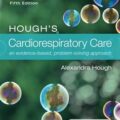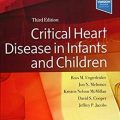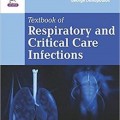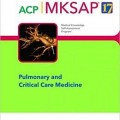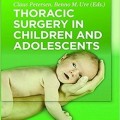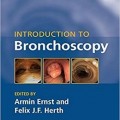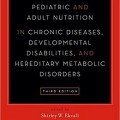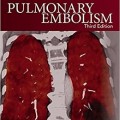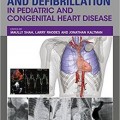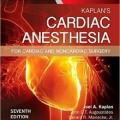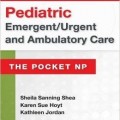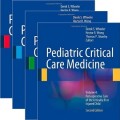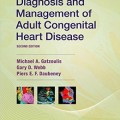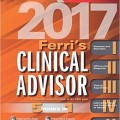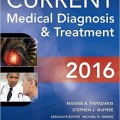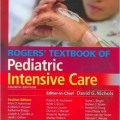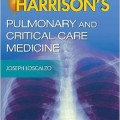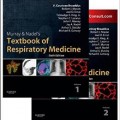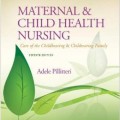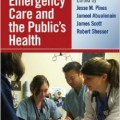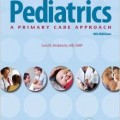دانلود کتاب سری پشتیبان زندگی ACLS، CPR، BLS، PALS (4 جلدی)
ACLS, CPR, BLS, PALS Life Support Series, 4-Vol, 2016 Edition
This Advanced Cardiac Life Support (ACLS) Provider Hand book and health care education course highlights the importance of high-performance team dynamics and communication, first aid, systems of care, recognition and intervention of cardiopulmonary arrest, immediate post-cardiac arrest, acute dysrhythmia, stroke, health care management and Acute Coronary Syndromes (ACS). This provider handbook details improvements in outcomes during complex cardiovascular, respiratory and other emergencies (e.g. metabolic, toxicological) by expanding on core ACLS guidelines and encouraging critical thinking and decision-making strategies. Through instruction and active participation in case-based scenarios, learners enhance their skills in the different diagnosis and treatment of pre-arrest, arrest and post-arrest patients. Our education training material is created and maintained by practicing physicians, adhering to the latest American Heart Association guidelines (2015-2020). This ACLS course for health care providers details health care law and ethics.
ACLS INITIAL ASSESSMENT:
- Determining whether an individual is conscious or unconscious can be done very quickly. If you notice someone in distress, lying down in a public place, or possibly injured, call out to them.
- Make sure the scene is safe before approaching the individual and conducting the BLS or ACLS Survey.
- When encountering an individual who is “down”, the first assessment to make is whether they are conscious or unconscious.
- If the individual is unconscious, then start with the BLS Survey and move on to the ACLS Survey.
- If they are conscious, then start with the ACLS Survey.
The content contained herein is based on the most recent AHA publications on ACLS and will periodically compare previous and revised recommendations for a comprehensive review.
CPR, AED and First Aid is an essential and vital life saving skill that everyone can learn to save a life. There are two methods to performing CPR. The first being chest compressions and providing rescue breaths. As a rescuer, if you are untrained in CPR, then give t”hands-only” CPR, or chest compressions. To deliver high-quality CPR, you must begin high-quality chest compressions quickly, as these are considered the most important factor in giving the person a chance to recover. Compressing the chest circulates blood to the brain and the heart. High-quality chest compressions are delivered at a rate between 100 to 120 beats per minute and at a depth between 2 to 2.4 inches (5 to 6 cm). Health care provider CPR maintained by adhering to the American Heart Association(AHA) guidelines (2015 – 2020).
For adult CPR, do the following:
- First make sure the scene and area around the person is safe.
- Tap the person and speak loudly: “Are you okay?”
- Yell for help. Use a cell phone to call 911 and send a bystander to get an AED.
- Check the person’s breathing.
- If the person is not responding, breathing, or only gasping, start CPR.
- Give 30 compressions at a rate of 100 to 120 beats per minute and at a depth between 2 to 2.4 inches (5 to 6 cm). Let the chest rise back up before you start your next compression.
- Open the airway and give two breaths.
Approximately, every five years, the AHA updates the guidelines for CPR. The content contained herein is based on the most recent AHA publications on CPR and will periodically compare previous and revised recommendations for a comprehensive review.
These health care techniques are based on the most recent research and organized in systematic step, or the Chain of Survival, which begins with Basic Life Support (BLS) based on the latest AHA Standards and Guidelines (2015-2020). This BLS Provider Handbook for health care providers details the most current health care laws and ethics.
The BLS course teaches both single-rescuer and team basic life support skills for application in both pre hospital and in-facility environments, with a focus on high-quality CPR, how to use an AED and perform first aid. Our educational training material is created and maintained by practicing physicians, adhering to the American Heart Association(AHA) guidelines.
Keys for BLS:
- This course details how to use an Automatic External Defibrillator(AED).
- This Course details how to promptly recognize several life-threatening emergencies and quickly start the Chain of Survival.
- Deliver appropriate ventilation, health care management and provide early use of AED, and provide rescue breathing.
- Understand how to work with other rescuers as part of a team and how to treat those in life-threatening situation.
Approximately, every five years, the AHA updates the guidelines for BLS. The content contained herein is based on the most recent AHA publications on BLS and will periodically compare previous and revised recommendations for a comprehensive review.
The goal of the PALS health care Course is to improve the quality of care provided to seriously ill or injured children, resulting in improved outcomes. This health care first aid course uses a series of simulated pediatric emergencies to reinforce the important concepts of a systematic approach to pediatric assessment, first aid, health care, basic life support, PALS treatment algorithms, effective resuscitation and team dynamics. Our medical education training material is created and maintained by practicing physicians, based on the American Heart Association Standards and Guidelines(2015-2020). PALS is a series of protocols to guide responses to life-threatening clinical events. These responses are designed to be simple enough to be committed to memory and recalled under moments of stress.
PALS ESSENTIALS:
- PALS is often performed on children and infants, PALS providers should be proficient in BLS.
- PALS algorithms are based on the current understanding of best practices to deliver positive results in life-threatening cases and are intended to achieve the best possible outcome for the child or the infant during an emergency.
- The individual algorithms included within this app are: Basic Life Support(BLS), Advanced Cardiac Life Support (ACLS), Pediatric Advanced Life Support (PALS), Cardiopulmonary Resuscitation (CPR), AED and First Aid
Approximately, every five years, the AHA updates the guidelines for PALS. The content contained herein is based on the most recent AHA publications on PALS and will periodically compare previous and revised recommendations for a comprehensive review.
لینک کوتاه : https://bookbaz.ir/?p=73116
نویسنده : Dr. Karl "Fritz" Disque
ناشر : Satori Continuum Publishing
سال انتشار : 2016
زبان کتاب : انگلیسی
نوع فایل : PDF
تعداد صفحات : 235
(ISBN) شابک : -
قیمت کتاب درآمازون : $70.74
حجم فایل : 15 MB





